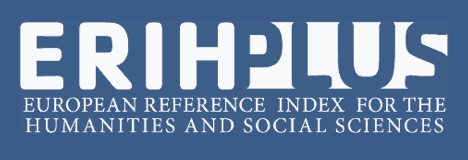ESTIMATION OF EROSION AND SEDIMENTATION USING SEDIMENTOLOGICAL DATA AND CALCULATION OF SUSPENDED SEDIMENT LOAD IN GARMSAR WATERSHED
Abstract
Erosion, sediment transport, sedimentation and water quality are very important issues in watershed management. Based on the initial study, it was found that the three factors of geological materials, slope, and climate are the most important factors in erosion. Therefore, these three factors were examined and combined to create work units. Then, the qualitative sensitivity of the rocks and pre-Quaternary formations was continually determined using the criteria of resistance method and hardness of the rock mass in a field method. Then, several statistical regression models were investigated by discharge classification and temporal separation of data; and by establishing a regression relation between flow discharge and sediment discharge data and its simulation, sedimentation rating curves along with FAO and USBR were presented based on the error least squares method according to statistical analysis methods, and annual long run suspended sediment load values were estimated by combining the proposed models and flow discharge methods such as flow continuity curve, daily mean discharge, and monthly mean discharge. In this regard, the statistics of a 13-year period of Bankooh hydrometric station on the HablehRood River were used. Finally, combination of the classes mean model with the mean daily discharge by FAO method was introduced as a suitable model.
References
DARVISHZADEH, A. Geology of Iran. Amir Kabir Publications, 1993, 900 p.
DEHGHANI A.; ZANGANEH M.A.; MOSAEDI A.; KUHESTANI N. Comparison of suspended load estimation with two methods of sediment rating curve and artificial neural network in Dough River of Golestan Province. 2009. Agriculture and Natural Resources Science. 16(1): 276–266.
EINI, N; HAJI KARIMI; MARZBAN FARAMARZI; MAMIZADEH, J. Methodology of Underground Dam Locating, First National Conference on Water Crisis, Isfahan, Islamic Azad University of Khorasgan Branch, 2013.
FEIZNIA, S.; MAJDABADI FARAHANI, F.; MOHSENI SARAVI M.; ARAB KHADRI M. Proper statistical period for estimating annual sedimentation average and its relationship with area, annual sedimentation changes, climatic characteristics, geology and vegetation of the area, 2002.
GORGAN Agricultural Sciences and Natural Resources Journal.
GERICKE A.; VENOHRE M. Improving the estimation of erosion-related suspended solid yields in mountainous, non-alpine river catchments. 2012. Environmental Modelling and Software. 37: 30-40.
HOROWITZ, A. J. The use of rating (transport) curves to predict suspended sediment concentration: a matter of temporal resolution. Turbidity and other sediment surrogates Workshop. U.S. Geological Survey. 2002, 3 p.
HARAJCHI, M. Investigation of Physicochemical Factors Affecting Erosion of Marls in Northeast of Garmsar. M. A. thesis, Kharazmi University, Tehran, 2018.
KHAMOSHI M.R. Study of Sedimentology: Geomorphology and Sedimentary of Quaternary Deposits of Garmsar Plain, M.A. Thesis, Tehran University of Teacher Education, p. 107 .1996
MOHAMMADI A.; MOSEADI A.; HESHMATPUR A. Determine the best method for estimating the suspended sediment in the river gauging stations Qazzaqli in Gorgan. 2007. Agricultural Sciences and Natural Resources. 14 (4): 232–246
NOLAN, K. M.; JANDA, R. J.; GALTON, J.H. Sediment sources and sediment-transport curves: in Proceeding of the Fourth Federal Interagency Sedimentation Conference, v. 1, Las Vegas, p. 4-70 to 4-79, 1976.
POUR AGHNIAEI M. J.; DOMIRI GANJI M.; YOUSEF POUR A.; GHERMEZCHESHMEH B. A review on estimation methods for suspended load (Case study: Seydon Basin). 2007. Water Resources Research. 3(3): 73–85.
SHAFAEI BOJESTAN, M. Sediment Hydraulic Press, Shahid Chamran University Third Edition: 2008. 470p.
SAGHAFIAN, B. et al. Analysis and Analysis of Suspended Sediment Areas Based on Image Processing GIS Satellites and Analyzes, Third National Conference on Erosion and Sedimentology, Tehran: Soil Conservation Research Center and sanitation, 2005.
WALLING, D. E. Suspended sediment transport by rivers: a geomorphological and hydrological perspectives. 1996. Arc. Hydrobiol. Spec. Issues advance Limnol. 47, p. 1-27.
ZORATIPOUR, A. Comparison of Some Statistical Methods for Estimating Suspended River Load (Case Study: Taleghan River). Thesis Master of Watershed Management, University of Tehran, 2007.

This work is licensed under a Creative Commons Attribution-NonCommercial 4.0 International License.
Policy Proposal for Free Access Journals
Authors who publish in this journal agree to the following terms:
a. Authors retain the copyright and grant the journal the right of first publication, with the work simultaneously licensed under the Creative Commons Attribution License which allows the sharing of the work with acknowledgment of the authorship of the work and initial publication in this journal.
b. Authors are authorized to take additional contracts separately, for non-exclusive distribution of the version of the work published in this journal (eg publish in institutional repository or as a book chapter), with acknowledgment of authorship and initial publication in this journal.
c. Authors are allowed and encouraged to publish and distribute their work online (eg in institutional repositories or on their personal page) at any point before or during the editorial process, as this can generate productive changes, as well as increase the impact and The citation of published work (See The Effect of Free Access).





















